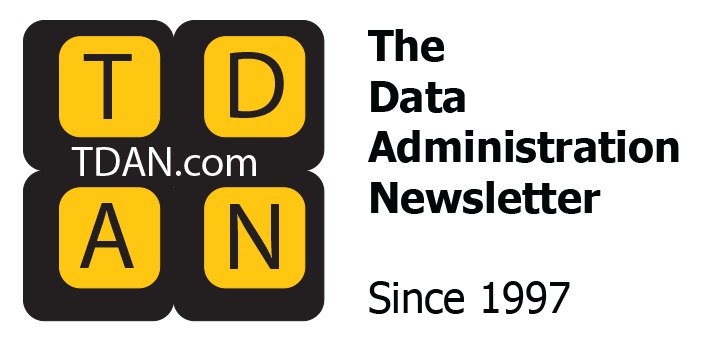
Taking immediate action on sensor data is vital in modern Internet of Things (IoT) systems. Real-time streaming serves as the fundamental structure of IoT analytics because it enables automated responses, predictive insights, and operational efficiency. Analyzing and responding to real-time data has become mandatory for healthcare, aerospace, and manufacturing systems.
An example of real-time streaming’s application can be seen in a hospital operating theater. Edge-enabled devices monitor patient vital signs, such as heart rate, oxygen saturation, and respiration. These devices display patient metrics locally and simultaneously stream data to central systems for historical analysis. Detected abnormalities can spur an immediate response, while longer-term trends can inform treatment planning.
Real-time processing also improves asset longevity. Continuous monitoring enables systems to analyze industrial equipment telemetry data and detect early warning signs of failure. Operators can schedule repairs during planned downtime through predictive maintenance systems to prevent production interruptions and minimize unexpected equipment failure costs.
Real-time analytics enables commercial operations to optimize their inventory replenishment processes. Implementing sensors in vending machines and retail shelves facilitates automatic resupply functions, leading to improved customer satisfaction while minimizing revenue losses associated with stockouts. Supply chain environments can benefit from stock level monitoring and consumption trend analysis to generate accurate demand forecasts.
Architectures That Support Scalable IoT Analytics
IoT systems rely on architectures that can efficiently scale, adapt, and process data to support these use cases. Four primary layers compose a typical real-time IoT analytics architecture:
- Streaming ingestion platform — This layer receives high-frequency data from millions of devices and buffers it for downstream consumption.
- Stream processing platform — This layer transforms, enriches, and analyzes the incoming data stream in real time. It supports actions based on use cases and facilitates advanced operations such as complex event processing (CEP). Common technologies used in this layer include Spark Structured Streaming and Kafka Streams.
- Time-series data storage — Given the chronological nature of IoT data, time-series databases enable efficient querying and retention.
- Analytics and warehousing layer — Cloud-based data warehouses store transformed datasets for reporting, monitoring, and machine learning (ML) applications.
These architectures benefit from design scalability that supports dynamic elasticity to handle bursty traffic patterns. IoT data ingestion is seldom consistent because load fluctuates due to sensor outages, network issues, or episodic spikes in telemetry.
Edge computing mitigates some of these challenges. Edge systems reduce latency and bandwidth usage by processing data at or near the source while enabling local decision-making. A medical device, for instance, may analyze patient vitals locally, display them on an integrated screen, and only transmit anomalies or a summary to upstream for centralized logging and diagnostics.
A complementary strategy involves minimizing payload and selectively transmitting data, particularly in non-critical use cases. Rather than transmitting data continuously, users can program devices to send values only when readings fall outside predefined thresholds. This event-driven approach minimizes unnecessary data flow, reducing infrastructure load while maintaining essential visibility.
Four architecture models are commonly deployed to accommodate varied use cases. Lambda architecture combines batch and stream processing for accuracy and speed. Kappa architecture streamlines real-time-only workflows with simpler maintenance. Delta architecture allows atomicity, consistency, isolation, and durability (ACID) transactions on streaming data using unified data lakes. Medallion architecture organizes data into bronze (raw), silver (cleaned), and gold (aggregated) layers for analytic agility. These frameworks offer flexibility depending on latency tolerance, fault tolerance, and consistency requirements.
Deployment Challenges and Cost Considerations
Despite its promise, deploying IoT analytics at scale creates technical and financial challenges. Systems must ingest and process massive data volumes from potentially millions of sensors, many of which transmit data every second. Load can vary significantly due to network inconsistencies or device status, demanding a robust real-time infrastructure that can handle peaks and troughs.
Incomplete or delayed data is a recurring concern. If one device temporarily fails or sends corrupted values, it may compromise a predictive maintenance rule that relies on three inputs: pressure, temperature, and vibration. Programmers are tasked with designing systems that operate with partial data, especially for mission-critical scenarios like fire detection, where delaying action can be catastrophic.
Cost is also a limiting factor. Processing every sensor event at high frequency consumes compute, bandwidth, and storage resources. As a result, organizations need to judiciously determine data granularity, frequency, and payload design based on the criticality of each use case. In aviation, real-time streaming is essential, while in warehousing, near real-time may suffice.
Interoperability adds complexity, as IoT ecosystems often consist of heterogeneous devices with varied protocols and data schemas. A normalization layer is typically introduced after ingestion to standardize these data formats, facilitating downstream processing and analytics.
This trade-off between performance and cost is central to system design. As McKinsey notes in its State of AI report, it is essential for organizations that embed automation into workflows to “design for scale early” to avoid runaway infrastructure costs.
Security, Compliance, and Data Governance in IoT Pipelines
With the stakes high, IoT pipelines are obligated to incorporate strong security and governance mechanisms. It is necessary for each payload entering the system to undergo strict authentication and validation to prevent tampering or spoofing. This is particularly critical in sensitive environments such as defense facilities or aircraft, where falsified data could lead to false alarms or disrupted operations.
Trade-offs exist with security mechanisms. Resource-constrained devices may struggle with encryption overheads, requiring lighter security protocols without compromising trust. It is vital for the degree of protection to match the sensitivity of the use case, for example, high for aircraft systems and moderate for vending machines.
Edge computing provides a valuable enhancement to privacy. By processing data at or near the source, sensitive raw data can be filtered or anonymized before transmission. This architecture aligns well with regulatory expectations in healthcare and finance, where compliance mandates restrict organizations on how and where they transmit or store data.
Device identity management is another security dimension. Each device in an IoT network must be uniquely identifiable and verifiable. This ensures the tracing of data provenance and isolation of compromised devices. Implementing zero-trust principles, where every interaction will authenticate regardless of the source, further strengthens the reliability of IoT environments.
Data governance often occurs in the consumption layer, where analysts clean, transform, and store data for analysis. In contrast, ingestion layers are tightly controlled and purged frequently, often within 30 days, to limit risk exposure. Governance measures include access controls, audit trails, and data lineage tracking to meet internal policies and external regulations like the Health Insurance Portability and Accountability Act (HIPAA) or the General Data Protection Regulation (GDPR).
AI’s Expanding Role in IoT Analytics
Artificial intelligence (AI) enhances IoT analytics by enabling smarter, faster, and more resilient decision-making. Unlike rule-based systems that involve complete inputs, AI models can infer outcomes from incomplete or delayed data, which is ideal for environments where device reliability varies.
Predictive models trained on historical data can anticipate equipment failures, consumption surges, or safety risks before they manifest. AI also adjusts dynamically to new patterns. For instance, an AI model can understand and monitor a machine that behaves differently in summer than in winter more effectively than static logic can.
Online learning helps models incorporate new data in real time, refining predictions continuously. Feedback loops are critical here. When an AI model makes a poor recommendation, that correction needs to feed back into the system to improve future accuracy.
The adoption of AI in IoT analytics is accelerating. While many organizations began with rule-based automation, the shift toward AI-enhanced systems reflects a desire for scalability, adaptability, and fault tolerance. According to Wevolver’s 2024 State of Edge AI Report, AI integration is increasingly moving to the edge, allowing devices to make smarter decisions without round trips to the cloud.
Real-World Examples of Impact
In aviation, continuous monitoring of onboard systems enables airlines to detect engine component wear before critical failure. A prominent example is the U.S. Air Force, which implemented a predictive maintenance program for its F-16 fleet. According to a recent case study, this initiative resulted in a 27% reduction in unscheduled maintenance, a 24% decrease in mean repair time, and $2.5 billion in projected lifecycle cost savings across the fleet.
In commercial buildings, energy optimization platforms process sensor data from lighting, HVAC, and occupancy sensors. The system schedules shutdowns in unoccupied zones by analyzing usage trends, resulting in an estimated 18% reduction in energy costs, as illustrated in Honeywell’s smart building initiatives.
In healthcare environments, real-time IoT analytics improve patient safety and treatment outcomes. During surgical procedures or critical care, edge-enabled medical devices continuously monitor key vital signs, such as heart rate, oxygen saturation, respiratory patterns, and blood pressure. These readings are displayed locally on device interfaces for immediate visibility and streamed to centralized systems for archiving and analysis.
This dual-path design enables instantaneous response to emergent conditions and retrospective insights into patient reactions to specific medications or procedures. Over time, clinicians can use historical data to refine future interventions or avoid adverse events, thereby improving long-term care quality. When paired with AI models, the system can detect subtle trends, such as gradual oxygen level changes, that might not be apparent through manual observation alone. These capabilities are particularly valuable in high-stakes environments like operating rooms and intensive care units, where milliseconds matter, and data governance under regulations like HIPAA is non-negotiable. These examples underscore the value of combining streaming infrastructure with intelligence, whether embedded at the edge or orchestrated in the cloud.
Strategic Outlook and Future Trends
Looking ahead, successful IoT strategies will hinge on balancing architectural robustness with flexibility. Organizations are encouraged to embrace edge analytics where latency or privacy is a concern, employ dynamic resource scaling to manage operational costs, train AI models on historical trends to inform future decisions, ensure compliance architectures that can evolve with regulation, and design for delayed data as a norm, not an exception.
Trends suggest increased integration of AI and ML in real-time decision loops, wider adoption of online learning systems, and a growing emphasis on privacy-preserving analytics. The convergence of IoT, edge computing, and AI sets the stage for more autonomous, responsive, and efficient systems across industries.
There are several core principles for effective IoT streaming analytics, including:
- Delayed data handling — It is necessary for IoT systems to accommodate delays and incomplete data without halting operations. Real-time decisions often depend on partial inputs.
- Cost-effective architecture design — Cost-effective architecture design balances scalability with economic viability. Not all use cases justify full real-time capabilities, as near real-time may suffice.
- Security and compliance — Robust authentication, encryption, and governance frameworks are essential, especially in sensitive industries such as healthcare and aviation.
IoT system capabilities across industries transform through real-time streaming analytics, which enables predictive, responsive, and adaptive operations. Strategic planning across architecture, data governance, cost control, and intelligent automation is necessary to achieve these benefits at scale. Organizations that build flexible and resilient systems with compliance capabilities will achieve better long-term value through edge computing and AI advancements. The expanding IoT landscape will drive future data-driven, decision-making innovation through the convergence of these technologies.
